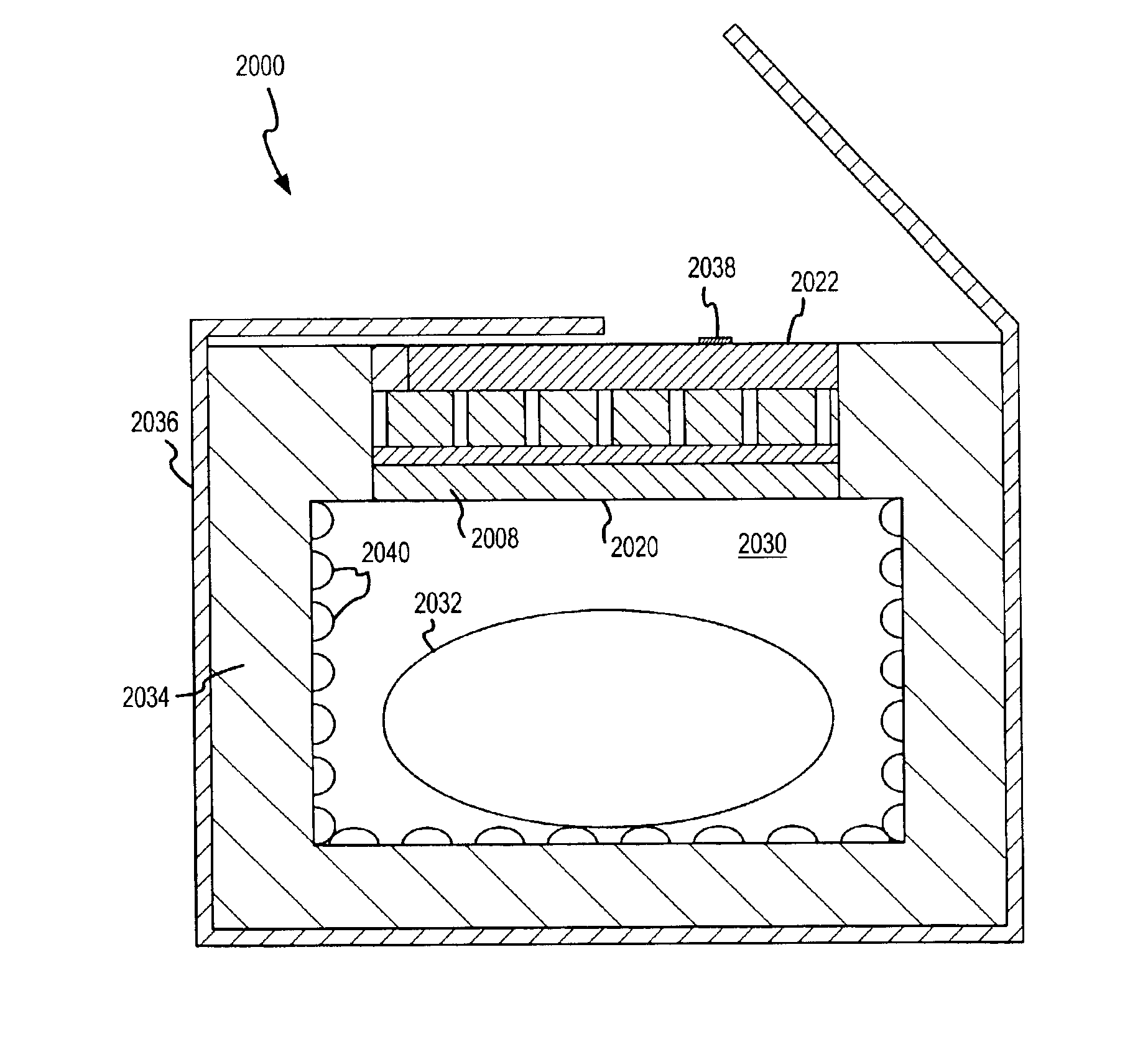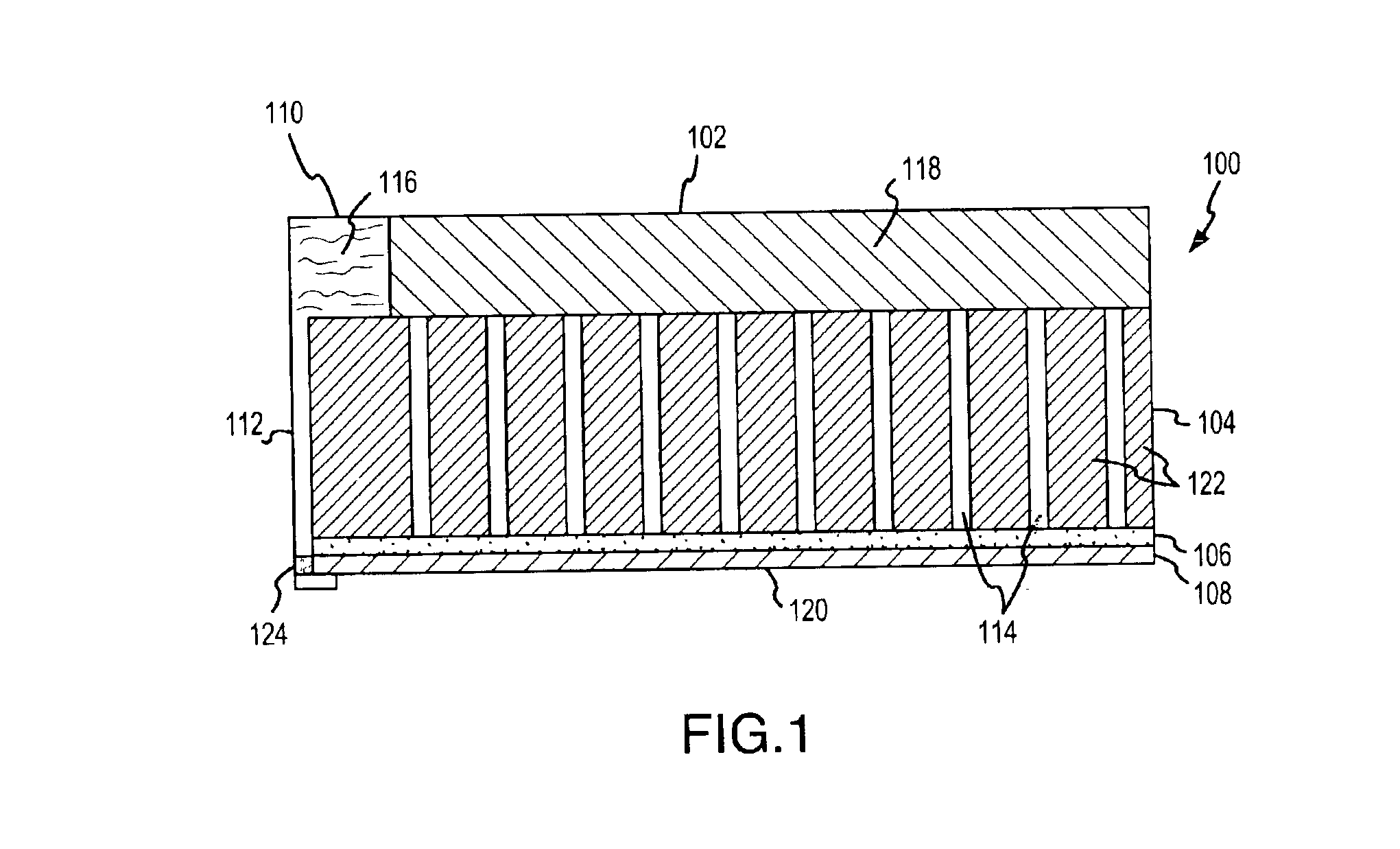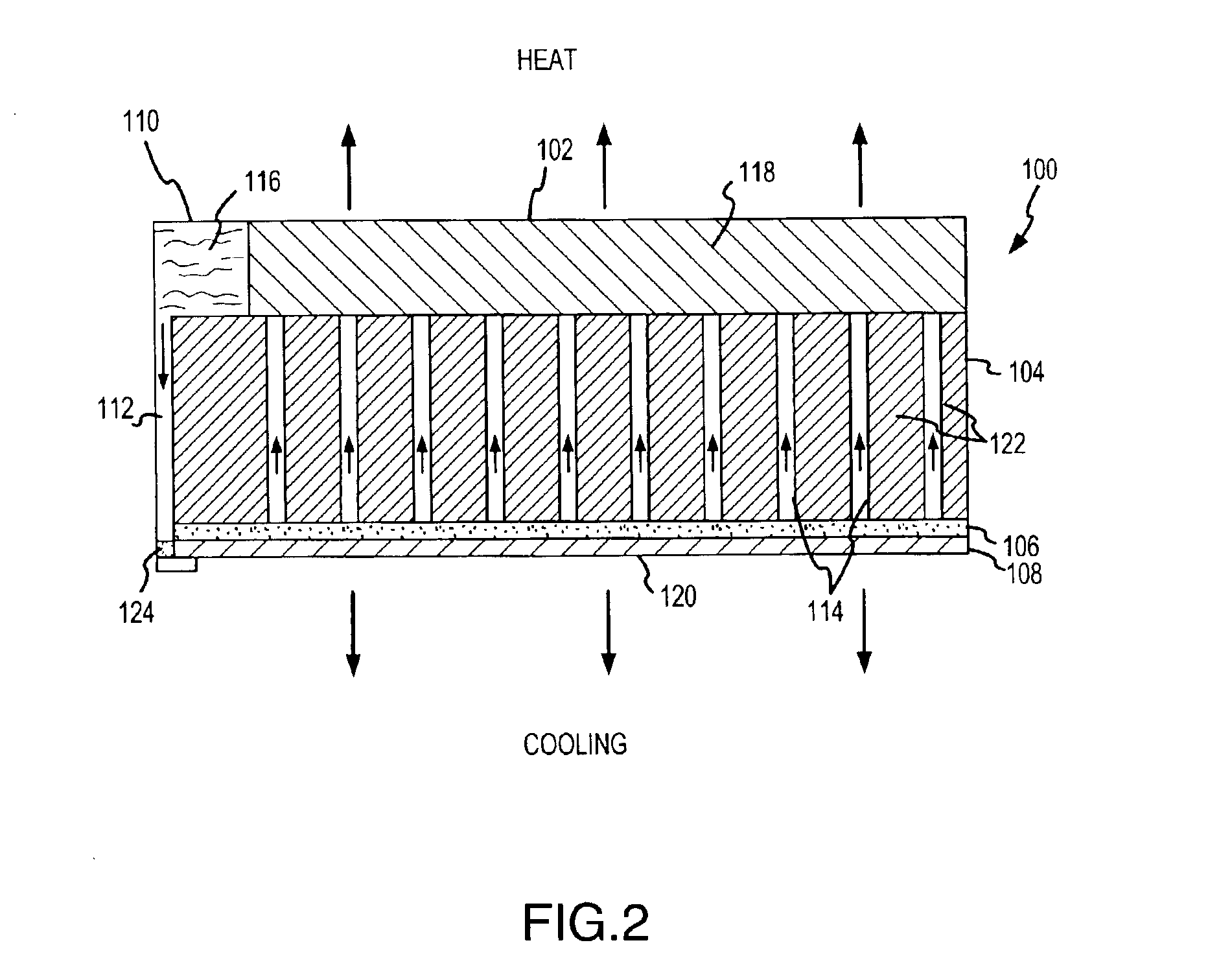Temperature controlled shipping containers
a technology for shipping containers and cooling devices, applied in domestic cooling devices, cooling methods, containers, etc., can solve the problems of large volume of ice/gel packs, hazardous dry ice, and inability to accept air freight, etc., to enhance the cooling capability of sorption cooling devices, improve thermal conductivity, and improve the effect of thermal conductivity
- Summary
- Abstract
- Description
- Claims
- Application Information
AI Technical Summary
Benefits of technology
Problems solved by technology
Method used
Image
Examples
example 1
Cooling Device with Extended Cooling Time
[0224]Example 1 was a Size A cooling device with 400 grams of desiccant and 200 milliliters of water in the slow feed water reservoir. This cooling device also had two layers of wicking material, instead of one. The cooling device was tested in a VIP container and the results are illustrated in FIG. 28, which shows the ambient temperature, desiccant temperature and internal base temperature as a function of time.
[0225]As is illustrated in FIG. 28, the temperature of the cavity dropped from about 26° C. to about 6° C. and the temperature did not rise above 10° C. for at least 48 hours.
example 2
Effect of Starter Reservoir on Performance
[0226]Two Size A cooling devices (Examples 2A and 2B) were assembled so that they were identical to each other except that Example 2A did not have a starter liquid reservoir and Example 2B utilized a starter reservoir. Both were tested in VIP containers. The results for Example 2A are illustrated in FIG. 29 and the results for Example 2B are illustrated in FIG. 30. It can be seen that the internal cavity of Example 2B exhibited a rapid drop to less than 5° C., whereas the internal cavity of Example 2A dropped to slightly less than 10° C., demonstrating the effectiveness of utilizing a starter liquid reservoir.
example 3
EPS Container vs. VIP Container
[0227]Two identical Size A cooling devices were assembled. One (Example 3A) was tested in an EPS container and the other (Example 3B) was tested in a VIP container. The results for Example 3B are illustrated in FIG. 31 and the results for Example 3A are illustrated in FIG. 32.
[0228]As expected, the VIP container yielded a reduced internal cavity temperature over a longer period of time due to the improved thermal insulation properties of the VIPs.
PUM
| Property | Measurement | Unit |
|---|---|---|
| temperature | aaaaa | aaaaa |
| pressure | aaaaa | aaaaa |
| pressure | aaaaa | aaaaa |
Abstract
Description
Claims
Application Information
 Login to View More
Login to View More - R&D
- Intellectual Property
- Life Sciences
- Materials
- Tech Scout
- Unparalleled Data Quality
- Higher Quality Content
- 60% Fewer Hallucinations
Browse by: Latest US Patents, China's latest patents, Technical Efficacy Thesaurus, Application Domain, Technology Topic, Popular Technical Reports.
© 2025 PatSnap. All rights reserved.Legal|Privacy policy|Modern Slavery Act Transparency Statement|Sitemap|About US| Contact US: help@patsnap.com



